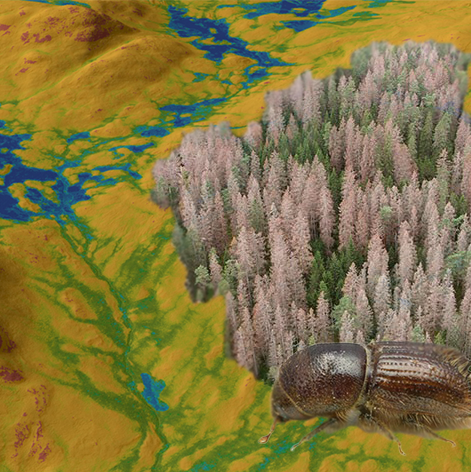Facts
City: online
Organiser: Kvarkensat
Last signup date: 10 March 2022
online

Space-based data helping to combat climate change.
Apply here: Ultrahack Hackathon
Acceptance based on submission, the best submissions may be approved early.
Climate change brings about major changes affecting us all. Extreme weather events become more frequent and especially the amount of rainfall increases in Northern Europe, one contributor being the warmer winters. New species of both vegetation and animals enter new areas while the existing species might have even major changes in their habitats. These lead to new challenges in the forestry industry. We are looking for ideas and solutions combining existing knowledge and datasets with space-based data and datasets based on satellite measurements, in four particular themes.
The three best proposals across all of the themes will be awarded a cash prize and possible continuation/acceleration within start-ups and innovation programs.
The SLU soil moisture map www.slu.se/mfk has a high resolution (2 m × 2 m) and is the most accurate map available today. This state-of-the-art soil moisture map has a limitation – it only shows the average soil moisture through the year, when in fact there is a huge variability in soil moisture depending on the weather conditions. The challenge and next step in the development of soil moisture maps is, therefore, to go from static maps to dynamic maps that include the temporal variability in soil moisture..
To identify forest areas with insect damages is important in several ways. With an early detection and removal of newly infested trees, the forest owner can minimize financial loss. The risk of infestations spreading to adjacent trees can also be reduced. New infestations often occur in connection with previous infestations; therefore, the knowledge of where the bark beetles have been active previously helps in the search for new infested trees.
The challenge is to make it easy for a private forest owner to be able to follow the development of their own forest and to see if there are "spots" of infested forest that arise or spread. Preferably a solution will be found that encourages regular monitoring of what is happening in the forest, marking affected areas and being able to communicate this information with others.
Due to the climate change, suitable times for heavy machinery to operate in the forests will change. Winters get shorter and warmer, shortening the period when the ground is frozen. This leads to a more limited operating window when forest machines can operate without a risk for heavy damage to the forest floor. Additionally, the moisture content of the forest floor changes towards the ground being moist more often and the moisture levels rising. High soil moistures typically decrease soil bearing capacity and increase the risk of heavy rutting by forest machines, particularly on peatlands and fine-grained mineral soils.
Depending on soil attributes, varying soil conditions can lead to difficulties in estimating when mechanized forest operations would be feasible to conduct. The challenge is to explore when and where forest harvesting should be scheduled with minimal ground damage.
Advances in digitalization, positioning systems (for example Galileo), Earth Observation technology, data availability and data processing can create new ways to perform tasks more efficiently and in a more coordinated holistic way. Concepts exploring the utilization of these in the forestry value chain can provide new opportunities to reduce climate change related emissions by increasing the efficiency of the various processes. The challenge is to explore the creation of better situational awareness of the future needs of the end users of harvested timber, incorporating the forest owners’ long-term forest management plans, current and future availability and the location of the harvesting machinery and operators, and current stocks of the harvested timber in many locations.
The hackathon is open to students, start-ups and researchers in teams of 3-5 persons. Relevant expertise to participate include: space and satellite data, machine learning and neural networks, computer science, positioning systems, automation, image processing/recognition, engineering, logistics, business/communications and forestry.
More information Ultrahack Hackathon
Johan Fransson, Researcher
Department of Forest Resource Management, Division of Forest Remote Sensing
johan.fransson@slu.se, +46907868531, +46706608697